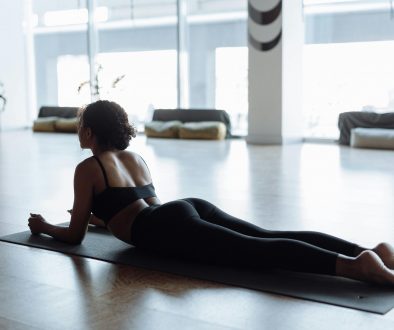Understanding Seasonal Affective Disorder (SAD) and How to Combat It
As the days grow shorter and the temperature drops, many people start to feel a shift in their mood. For some, this goes beyond the typical “winter blues” and develops into Seasonal Affective Disorder (SAD)—a form of depression that occurs at the same time each year, usually in fall and winter.
If you find yourself feeling unusually sluggish, irritable, or down during colder months, you’re not alone. Studies estimate that 5% of adults in the U.S. experience SAD, while many more suffer from milder seasonal mood changes. Fortunately, there are ways to manage and combat these symptoms. Let’s dive into what SAD is, why it happens, and some effective strategies to help boost your mood during the darker months.
What is Seasonal Affective Disorder (SAD)?
SAD is a type of depression that follows a seasonal pattern, most commonly occurring in winter. It can cause symptoms such as:
✅ Persistent low mood
✅ Loss of interest in activities
✅ Low energy and fatigue
✅ Changes in sleep patterns (oversleeping or insomnia)
✅ Increased cravings for carbs and weight gain
✅ Difficulty concentrating
✅ Feelings of hopelessness or worthlessness
The primary cause of SAD is believed to be a lack of sunlight, which disrupts the body’s internal clock (circadian rhythm), lowers serotonin levels (the “happiness” neurotransmitter), and increases melatonin production (making you feel more tired).
How to Combat Seasonal Affective Disorder
Maximise Natural Light Exposure
Since SAD is largely caused by a lack of sunlight, increasing your exposure to daylight is crucial.
🌞 Get outside daily: Even on cloudy days, outdoor light is more beneficial than indoor lighting. Try to spend at least 30 minutes outside in the morning or early afternoon.
🌅 Open your blinds and sit near windows: Let in as much natural light as possible. Rearranging your furniture to be near windows can help.
Try Light Therapy (SAD Lamps)
Light therapy is one of the most effective treatments for SAD. A light therapy box mimics natural sunlight and can help regulate melatonin and serotonin levels.
💡 How to use it? Sit near a 10,000-lux light therapy lamp for 20–30 minutes each morning. This can help reset your body’s internal clock and boost your mood.
Stay Active
Regular exercise is a natural mood booster, helping to increase serotonin and endorphins while reducing stress.
🏋️ Best types of exercise for SAD:
✅ Outdoor walks or jogging (especially in daylight)
✅ Yoga or stretching for relaxation
✅ Strength training or cardio for energy boosts
Even 10–15 minutes of movement a day can make a big difference!
Maintain a Healthy Diet
What you eat directly impacts your energy levels and mood. Since SAD often leads to carb cravings, be mindful of your diet.
🥦 Mood-boosting foods:
✅ Omega-3-rich foods (salmon, walnuts, flaxseeds)
✅ Whole grains instead of refined carbs
✅ Protein-rich foods to stabilize blood sugar
✅ Dark chocolate (in moderation) for serotonin boost
Limit excessive sugar and processed carbs to avoid energy crashes.
Prioritise Sleep Hygiene
SAD can throw off your sleep schedule, making you feel groggy or restless.
😴 Tips for better sleep:
✅ Stick to a consistent bedtime and wake-up time
✅ Avoid screens 1 hour before bed (blue light affects melatonin)
✅ Create a relaxing bedtime routine (reading, meditation, or herbal tea)
Stay Socially Connected
Winter months can make you want to hibernate, but socializing is crucial for mental health.
📞 Ways to stay connected:
✅ Plan regular meetups with friends and family
✅ Join an online or local hobby group
✅ Volunteer – helping others can lift your spirits
Even small interactions help combat isolation and keep your mood stable.
Consider Professional Help
If your symptoms are severe or persistent, don’t hesitate to seek professional help.
💙 Options to consider:
✅ Therapy – Cognitive Behavioral Therapy (CBT) is proven effective for SAD
✅ Medication – Antidepressants like SSRIs can help balance serotonin levels
✅ Supplements – Vitamin D or B12 supplements may be beneficial if you’re deficient
Final Thoughts
Seasonal Affective Disorder is a real and challenging condition, but you don’t have to suffer through it alone. By implementing light therapy, movement, good nutrition, social support, and sleep hygiene, you can significantly reduce SAD symptoms and make the colder months feel more manageable.





